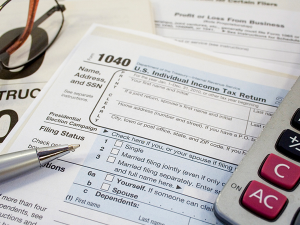
What motivates workers? You’d be forgiven for assuming that money gets them out of bed each day. But it’s 2023 and the pandemic-induced demise of strict 9-to-5 hours and subsequent proliferation of remote working have prompted a recalibration of priorities. There’s now more to employment than the size of a salary.
In 2022, research published by Aviva found more UK workers surveyed said they were attracted to their current role for the work-life balance (41%) than the salary (36%) – a switch in rankings compared to 2019 before the pandemic struck. It’s a similar story in the US, where 63% of the 4,000 respondents to the FlexJobs 2022 Career Pulse Survey said they’d choose work-life balance over better pay.
This exciting confluence of remote working and a desire for a healthy work-life balance has quite literally opened up a world of possibilities for the modern worker. If you can work from anywhere and want to harness the international opportunities on offer, you’ll want to know which countries best balance working hours with time for leisure and personal care.
To give you a headstart, we’ve explored the top five countries in the most recent Organisation for Economic Co-operation and Development (OECD) work-life balance index.
5. Netherlands
The land of bicycles, windmills, and tulips is as relaxing as it sounds. The Dutch are masters at establishing clear boundaries between work and their personal lives. They have been expertly juggling work, leisure and personal care longer than most: even before the pandemic blindsided businesses, 14.1% of the workforce in the Netherlands worked away from the office, compared to just 4.7% in the UK, and 3.6% in the US.
According to the OECD stats:
- Just 0.3% of employees work very long hours in paid work – the lowest rate in the OECD, where the average is 10%.
- Full-time workers devote 64% of their day on average – or 15.4 hours – to personal care (eating, sleeping, etc.) and leisure (socialising with friends and family, hobbies, games, computer and television use, etc.) – slightly more than the OECD average of 15 hours.
4. Spain
Unsurprisingly, Spain features in the top five. After all, this is the country where an afternoon rest (siesta) is ingrained in the fabric of the culture – and envied the world over. The Spanish believe there is time for everything – and who can blame them in a country with delicious food and mile upon mile of stunning sun-drenched coastline? This proactive mindset allows them to make time for family, friends, and their interests – with work fitting in around that.
According to the OECD stats:
- Just 2.5% of employees work very long hours in paid work – much less than the OECD average of 10%.
- Full-time workers devote 66% of their day on average – or 15.7 hours – to personal care and leisure – more than the OECD average of 15 hours.
3. Norway
Why would you want to spend every waking hour at work when you live in one of the most beautiful countries on earth? From the breathtaking fjords to the awe-inspiring northern lights, Norway is a country to be enjoyed outside – and you’ll have plenty of time to do just that thanks to the Working Environment Act. This progressive piece of legislation states that you are not allowed to work more than 13 hours per 24 hours, including overtime. You are also entitled to a minimum of 35 consecutive hours of rest during a working week.
According to the OECD stats:
- 1.4% of employees work very long hours in paid work – significantly less than the OECD average of 10%.
- Full-time workers devote 65% of their day on average – or 15.7 hours – to personal care and leisure – more than the OECD average of 15 hours.
2. Denmark
Denmark is no stranger to the upper echelons of global lifestyle charts – from contentment to quality of life. Its ranking as the second-best country in the world in terms of work-life balance is underpinned by a national obsession with “hygge”: the practice of creating cosy and congenial environments that promote emotional well-being. The result is working days that rarely extend beyond 5pm, an official 37-hour work week, and office closures in late July so Danes can enjoy the short Scandinavian summer.
According to the OECD stats:
- Around 1% of employees work very long hours in paid work – much less than the OECD average of 10%.
- Full-time workers devote more of their day on average to personal care and leisure than the OECD average of 15 hours.
1. Italy
The home to many of the world’s finest works of art, architecture and gastronomy is also home to the best work-life balance on the planet with a score of 9.4 out of 10 in the OECD index. You can live “la dolce vita” here thanks to Italy’s 40 hours working week – which must not exceed 48 hours, including overtime – robust labour laws governing work hours and holiday pay, and a social security system that provides compelling benefits like paid parental leave. This progressive land also offers a first-class tax-funded public healthcare system, providing free or low-cost services to all workers.
With plenty of free time at your disposal, you can concentrate on joining the locals in doing what they do best: eating some of the world’s most delicious food, drinking fine wine, and enjoying each other’s company in spectacular surroundings.
According to the OECD stats:
- Around 3% of employees work very long hours in paid work – much less than the OECD average of 10%.
- Full-time workers devote 69% of their day on average – or 16.5 hours – to personal care and leisure – more than the OECD average of 15 hours.
Currency transfers
Wherever you choose to live your best life, make sure you mitigate currency risk when making the international money transfers that are inherent to any move overseas. Search for the best deal when sending and receiving these cross-border payments by comparing the world’s leading foreign exchange companies here.
Tom Vicary
Author









